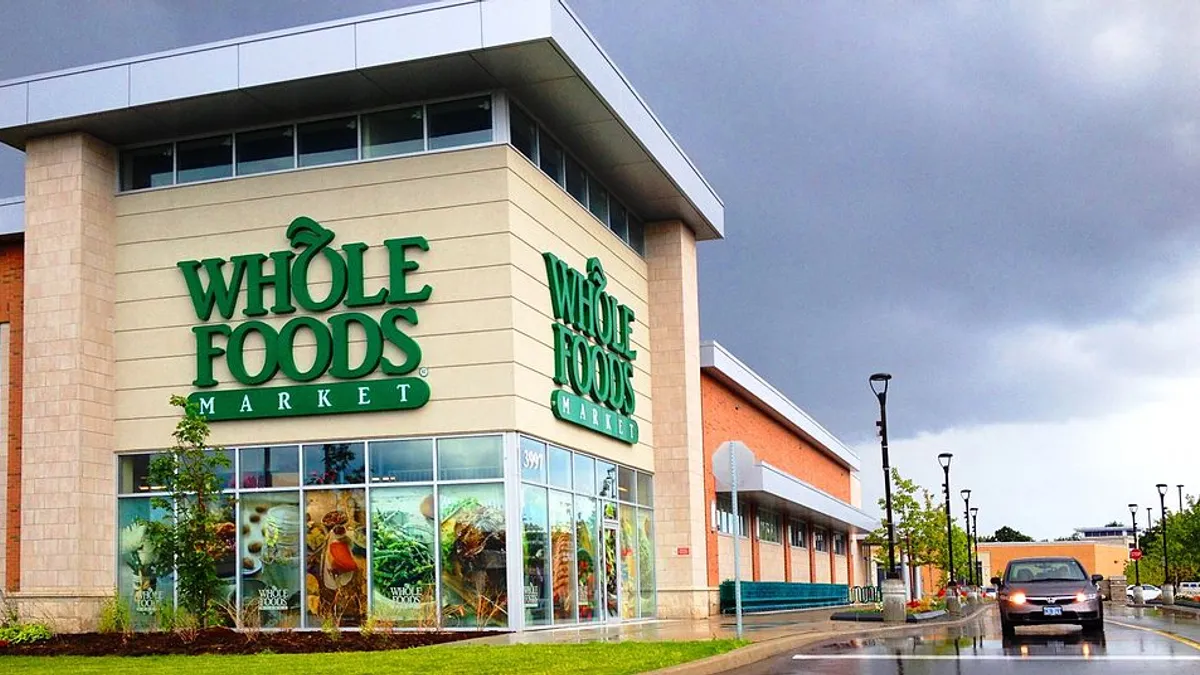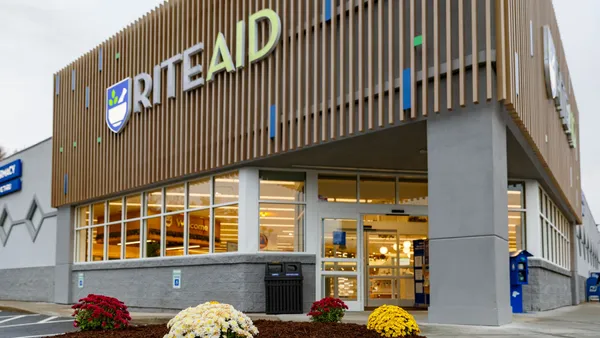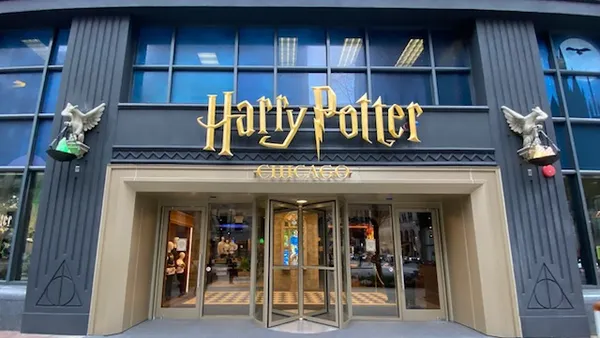Dive Brief:
-
According to data collected by location analytics company Foursquare, Whole Foods' store traffic within the first two days after Amazon closed its acquisition rose 25% compared to the year-ago week, Bloomberg reported.
-
Online-to-offline advertising firm InMarket found similar results: Whole Foods’ share of visits (its stake of total U.S. grocery traffic) rose 17% week-over-week on Aug. 28, the first day of discounts instituted by new owner Amazon. Share of visits the following two days were up 16% from the previous week, making the first three days of Amazon's pricing the busiest of the month, according to an InMarket Insights report emailed to Retail Dive. Meanwhile, grocery rivals lost share of visits, InMarket found: Trader Joe’s decreased by 1.12%, while Kroger’s has dropped by 2.67%, InMarket said.
-
The traffic boost also overwhelmed Amazon online as it added 2,000 Whole Foods items through its Prime Pantry and Prime Now services (none was sold through Amazon.com). E-commerce research and analytics firm One Click Retail found that more than $150,000 worth of goods were sold in the first week post-merger, and, of the top 100 sellers, just 7% of items remained in stock.
Dive Insight:
The price drops, which Amazon instituted at Whole Foods immediately, include a selection of items that, beyond just being grocery staples, reinforce the natural and organic grocer’s fresh appeal and ethical standards. Beyond the cuts, Amazon has also said it would focus on Whole Foods’ 365 private label, including selling it online to its Prime members.
The cuts and the focus on private label are hardly Amazon innovations. The grocery space has been under extreme price pressure of late, thanks in part to the expansion in the U.S. of no-frills German grocery chains Aldi, Lidl and Trader Joe’s. Those retailers offer low-key atmospheres, small selections in small formats, and all-private label offerings that undercut rivals by as much as 30% on some items.
Walmart, Target, Kroger and other grocery players are responding to that competition in the U.S. with aggressive pricing and product placement in stores. Moody’s Investors Service Vice President Mickey Chadha said last week in a note emailed to Retail Dive that he expects price competition to continue through the year. Still, Kroger held on in its second quarter, balancing the price competition with better-than-expected top-line growth, according to Moody’s.
It’s not at all clear that Amazon, new to the grocery space and never particularly worried about its retail margins, can hold on to its deep price cuts indefinitely. It's also not yet apparent whether Whole Foods customers will continue to frequent stores at the same rates. The run on Whole Foods items online indicates some level of potential logistics troubles for the grocery novice. In any case, Moody’s last week threw some cold water on the idea that Amazon would soon dominate the grocery business.
"Many see Amazon's purchase of Whole Foods as further evidence that the online giant is dominating U.S. retail, and the company is likely to remain the preeminent player in online shopping," Moody's Lead Retail Analyst Charlie O’Shea said in an email to Retail Dive. "Online sales still account for only about 10% of overall U.S. retail sales, with a much lower percentage in the grocery segment, leaving the big brick and mortar retailers, led by Walmart, still really formidable competitors in the industry.”
Amazon isn’t even close to overshadowing U.S. grocery sales, which are about $800 billion a year, Moody's notes. Walmart enjoys more than $200 billion (or more than a quarter) of that pie, while Kroger sells about $130 billion, Albertson's $60 billion and Costco $50 billion. “[I]t’s a big stretch to say Amazon will dominate the U.S. food retail business in the next two years," O'Shea added. "Even with Whole Foods in its basket, its food sales still amount to less than $20 billion annually.”














